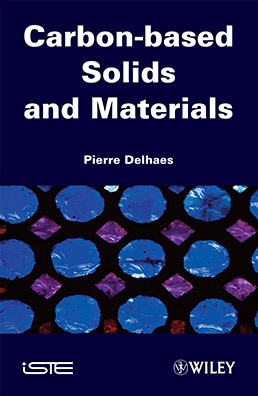
It is well known that carbon can be found as a solid in various guises, with different forms of bulk phases (graphites, diamonds and carbynes) as well as more molecular forms (fullerenes, nanotubes, and graphenes - for which the Nobel Prize was awarded in 2010).
The cause of this range of polymorphism is analyzed in the first part of this book (Chapters 1-5), with the propensity of carbon atoms to form different types of homopolar chemical bonds associated with variable coordinations numbers. Precursor organic molecules and parent compounds are also described to establish specific links with this rich polymorphism. In the second part of the book, (Chapters 6-10), a comparative review of the main classes of bulk physical properties of carbon materials is presented. This approach emphasizes in particular the electronic behavior of pi-polyaromatic systems organized in plane and curved atomic sheets.
Finally, in the third part of the book (Chapters 11-15), surface and interface characteristics are introduced, together with texture and morphology characteristics of these multi-scale carbon materials. An overview of the main fields of application for this remarkable range of materials shows the wide range of use and interest for these solids.
Part 1. Carbon Phases, Precursors and Parent Compounds
1. A Historical Overview.
2. Polymorphism of Crystalline Phases.
3. Non-Crystalline Carbons.
4. Derivative Compounds and Analogs.
5. From Aromatic Precursors to the Graphene Plane.
Part 2. Physical Properties of Solid Carbons
6. General Structural Properties.
7. Electronic Structures and Magnetic Properties.
8. Electronic Transport Properties.
9. Optical Properties and their Applications.
10. Vibrational Properties.
Part 3. Carbon Materials and Uses
11. Surface and Interface Phenomena.
12. Chemical Reactivity and Surface Treatment.
13. Divided and Porous Carbons.
14. Carbon Filaments, Composites and Heterogenous Media.
15. Use of Carbon Materials.
Pierre Delhaes is an emeritus research director at the Paul Pascal research center, CNRS and University of Bordeaux, France. He was President of the French Carbon group (1994-2000) and the first spokesman of the European Carbon Association.